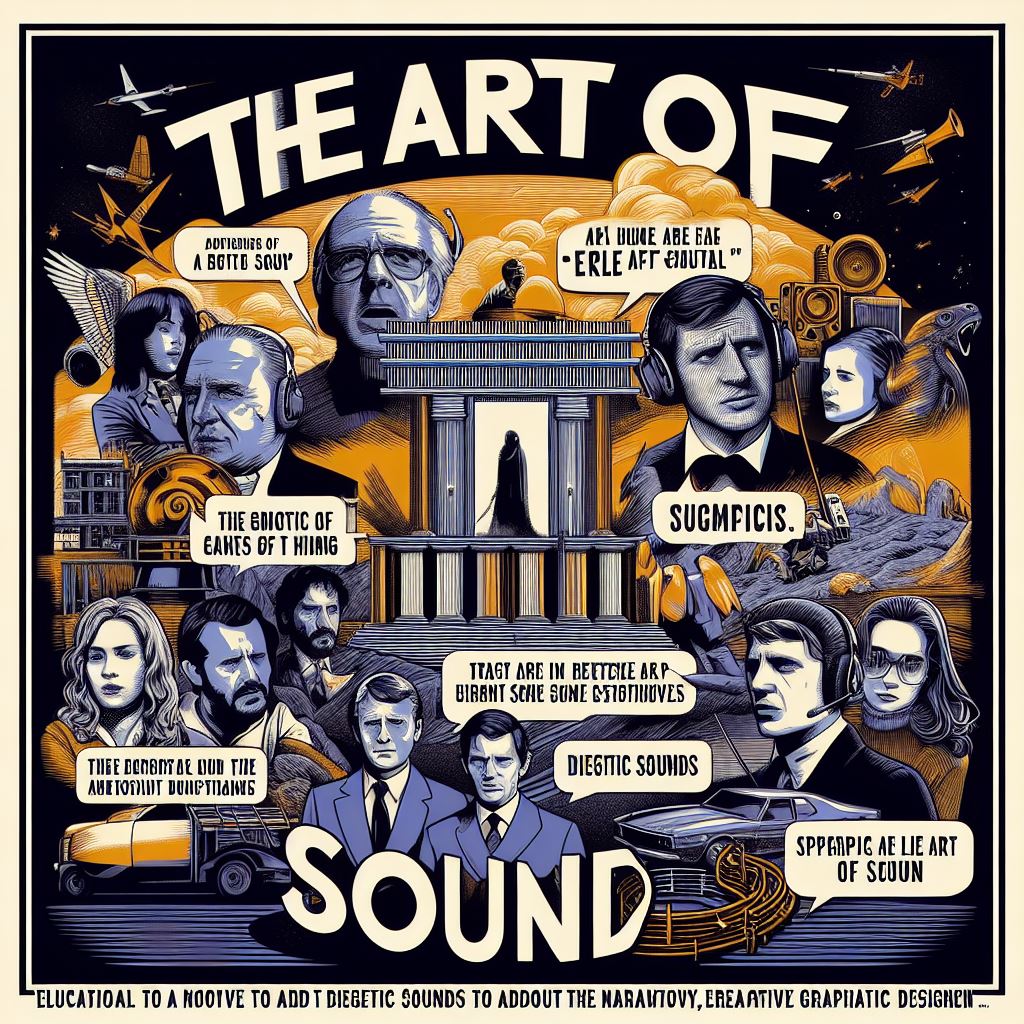Enhancing Storytelling with Diegetic Sounds: Expert Tips and Techniques
In the realm of cinema, the use of sound is a subtle yet powerful art. Among the various sound elements, diegetic sounds play a pivotal role in creating an immersive cinematic experience. Let’s unravel the major aspects of diegetic sounds and understand how they contribute to the symphony of motion pictures.

1. Definition of Diegetic Sounds: Crafting the Cinematic Reality
Diegetic sounds are those that originate within the fictional world depicted on screen. Unlike non-diegetic sounds, which are added in post-production, diegetic sounds exist within the narrative space of the film. They are the sounds characters can hear and interact with, adding authenticity and depth to the cinematic environment.
2. Ambient Atmosphere: Setting the Scene
One major aspect of diegetic sounds is their role in establishing the ambient atmosphere of a film. Whether it’s the bustling streets of a city, the rustling of leaves in a forest, or the hum of machinery in a sci-fi spaceship, diegetic sounds create a sonic landscape that grounds the audience in the world unfolding on screen. This atmospheric authenticity enhances the viewer’s suspension of disbelief.
3. Character Interaction: Bridging the Auditory Gap
Diegetic sounds serve as a bridge between characters and their environment. The footsteps of a protagonist, the creaking of a door, or the sound of a ringing phone not only enrich the auditory experience but also convey essential narrative information. These sounds become integral cues, guiding the audience through the unfolding story and deepening their connection with the characters.
4. Narrative Signifiers: Conveying Subtext
Within the realm of diegetic sounds, certain noises carry narrative weight and emotional subtext. A ticking clock can heighten tension, footsteps in a dark alley can evoke suspense, and the clinking of glasses can signify celebration. Filmmakers strategically use these sounds to convey emotions, foreshadow events, or underscore critical moments, adding layers of meaning to the visual narrative.
5. Diegetic Music: Harmonizing with the Story
Diegetic music, a subset of diegetic sounds, refers to music that characters within the film can hear. Whether it’s a live band playing in a bar or a character listening to a radio, diegetic music becomes an integral part of the narrative. It not only enhances the mood but can also be used to comment on or reflect the characters’ emotions and experiences.
6. Spatial Awareness: Creating Cinematic Depth
Diegetic sounds contribute to the spatial awareness of a scene. The position of sounds within the audio mix, combined with on-screen action, creates a sense of depth and dimension. This spatial awareness is crucial for guiding the audience’s attention, immersing them in the visual and auditory tapestry of the film.
Conclusion: The Artistry of Diegetic Sounds
In conclusion, the major aspects of diegetic sounds in motion pictures encompass their role in crafting cinematic reality, establishing ambient atmosphere, facilitating character interaction, serving as narrative signifiers, incorporating diegetic music, and contributing to spatial awareness. The artistry of diegetic sounds lies in their ability to seamlessly blend with the visual narrative, enriching the audience’s cinematic experience and making the film a multisensory masterpiece.